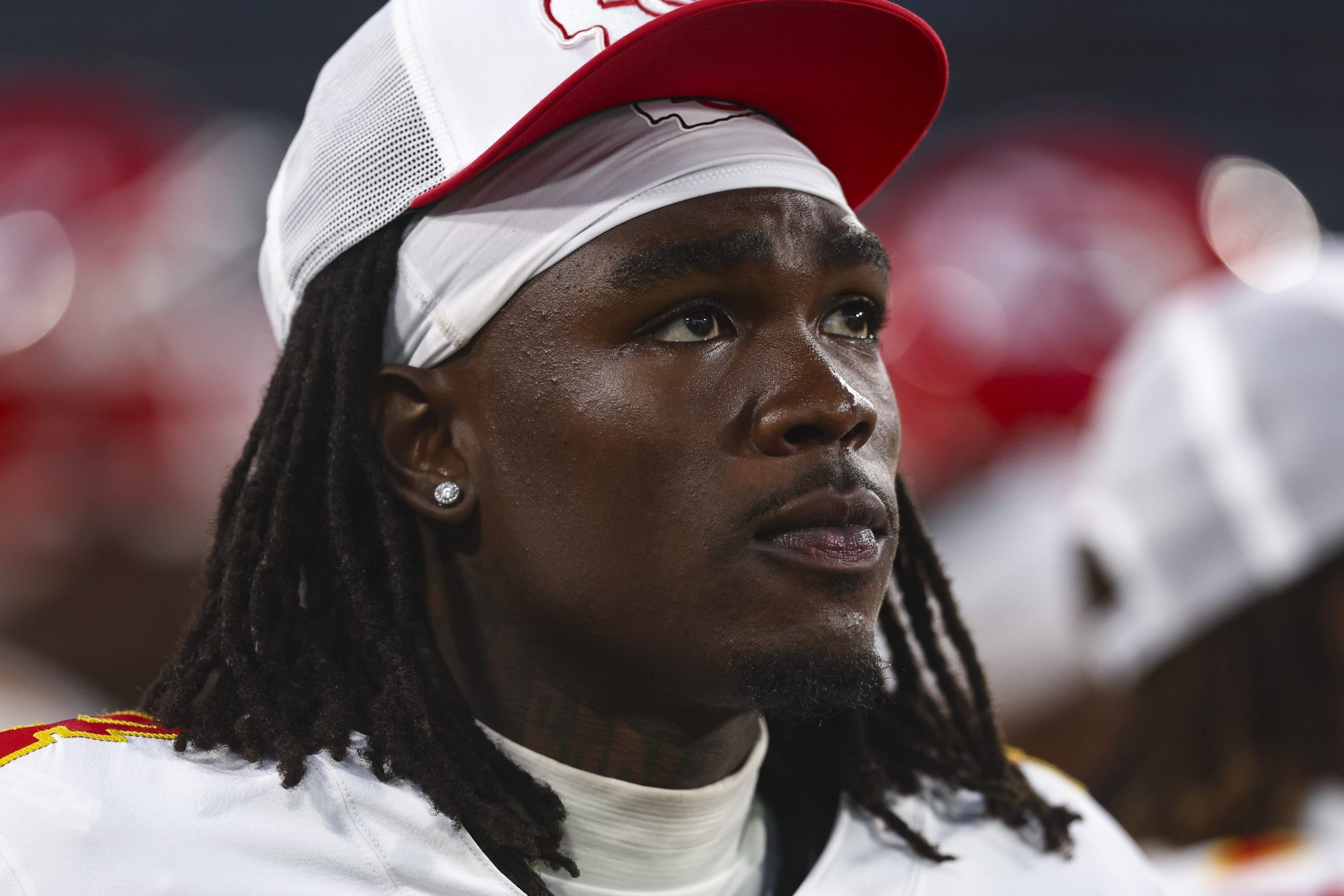For years, I have been telling people that if they love podcasts and want to support podcast creators—especially independent ones—they shouldn’t listen to podcasts on Spotify.
Starting in 2019, Spotify has attempted to own the entire lifecycle of podcast content, from creation to monetizing to consumption. If Spotify had its way, all podcasts would be created within the Spotify ecosystem, either through its Spotify for Podcasters tool (formerly the app Anchor), within its in-house studios or the many podcast production companies it has acquired over the years (Gimlet, Parcast, The Ringer), or by one of its exclusive partner shows, like Call Her Daddy or The Joe Rogan Experience.
I watched Spotify’s quick acquisition of the podcast production companies and tech with increasing unease, because I’d seen this film before, and it didn’t end well. Podcast production companies have bent themselves toward Spotify’s priorities by taking Spotify-exclusive contracts, in which the companies would make shows for exclusive distribution on the Spotify platform. This has resulted in a ton of original, exclusive content on the platform (and of course, Spotify also owned the intellectual property). As of last year, Spotify was the top U.S. podcast network by reach, according to Edison Research. Of course, this is because of the success of hugely popular shows like Call Her Daddy and Joe Rogan, but it’s also because of the sheer number of different shows available on the platform that aren’t available anywhere else.
Private tech companies have been interfering in media for several decades now and we have seen this play out with devastating effects in the world of journalism. All of this has made me incredibly wary of Spotify’s entry into the podcasting space, because I saw it replicating what Facebook and Twitter had done in digital media just a few years prior.
Before I was an audio producer, I was a social media editor. I worked at The Washington Post from 2015–17, and in that time I saw our team double in size as the paper invested more in social media distribution, as homepage traffic began to transform and more readers were coming in through places like Facebook and Twitter.
What this looked like at the Post was a veritable army of new hires, in social media plus video producers whose sole purpose was to feed video to platforms outside of the Post’s website. It did not stop there. The company hired on-air hosts, created a shiny studio inside the newsroom to cover election season, and embedded producers in every section to generate videos.
The Post invested countless dollars in video and wasn’t the only publication to do so. Companies like The New York Times, Wall Street Journal, CNN, BuzzFeed, NPR, and Hearst all invested heavily in video and social, hiring producers and churning out hundreds of videos a day. You might remember the famous line “pivot to video”—that became a shorthand for poor foresight and a lack of strategy and an excuse to prioritize one part of the newsroom over another.
These pivots weren’t just happening because everyone got an itch for video at the exact same moment. It was because platforms like Facebook, Twitter, and even YouTube were offering money to publications to subsidize their hires and pump out more social video. It was a kind of transactional pay-for-play agreement that would have been unthinkable in the past, made more palatable by the dire straits of funding journalism.
In 2016, Facebook signed contracts with more than 140 media companies and public figures to incentivize video creation, according to reporting by the Wall Street Journal. I remember my editors at the Post encouraging us to brainstorm as many Facebook Live ideas as possible for each upcoming news event. The goal was to come up with silly ideas, fun ideas, and most importantly, ideas that would keep people watching.
In exchange, the publications saw their video content generate greater reach on-platform—numbers only years later we would come to realize were totally malleable and within the platforms’ control. In the years since, hundreds of millions of dollars have changed hands between Meta and publishers; according to Semafor, the New York Times, Wall Street Journal, and Washington Post received $53.5 million a year combined from 2018-22.
In the months following Trump’s inauguration, we learned more about just how big a role social media had played in spreading misinformation that contributed, in part, to his win. Cambridge Analytica’s antics were exposed. In 2018, Congress called Facebook founder and CEO Mark Zuckerberg before it to explain how Facebook works. In one particularly indelible exchange, Republican Sen. Dan Sullivan asked Zuckerberg whether Facebook was a tech company or a publisher; Zuckerberg gestured broadly toward the former, with a non-answer that could provide plausible deniability for any future changes in direction.
In January 2018, Facebook announced it would deprioritize content from media organizations and instead prioritize “meaningful social interactions,” a decision that resulted in plummeting social referral metrics across the industry. According to The Pew Research Center, “Unique visitors to the websites of both newspapers and digital-native news sites showed no growth between the fourth quarters of 2017 and 2018, the second year in which there was no notable growth.” This stands in stark contrast to the period of 2014–16, when traffic was steadily rising.
In the years since, Meta has continued to move away from news content and the journalism industry has seen a calamitous number of shutdowns, layoffs, and buyouts. Since reaching its peak in April 2020, the Washington Post, along with nearly every other news publisher, has seen traffic drop to a fraction of what it once was.
The news industry still hasn’t recovered from these tech companies’ interference with the creation and distribution of the news. The post-recession socioeconomic moment was one of hyper-capitalist credulity in legacy media: this or that generous billionaire, the story went, would be willing to spend the money necessary to save the industry, and tech companies were as interested in informing the public as they were in scaling up and making money. But when Facebook shifted priorities, the companies that had invested in social video were like Wile E. Coyote, discovering only too late that he’d already run off a cliff.
By the end of the heady days of social media partnerships in journalism, I had transitioned my career into audio. I thought that focusing on making work for a famously intimate medium would collapse the distance between creator and audience in the way social media claimed to do. I knew about the intimacy of audio; I felt like my favorite audio hosts were my friends with whom I hung out at the same time every week.
Of course, now I know that this parasocial relationship is manufactured by hosts and producers to create a sense of familiarity and habit that gets people to come back. Part of that is the forced intimacy that occurs when listeners develop auditory relationships with hosts. But it was also the directness of the technology: As social media apps switched off chronological newsfeeds in favor of algorithmic models, podcasts became one of the few ways creators could talk to their audiences directly, unmediated by algorithms. Spotify, and its desire for a walled garden of audio it controls, obviously has changed that. My anxiety about Spotify’s increasing dominance isn’t just based on its market position, but how the company sits when compared with ancient internet history. I’m talking about RSS.
RSS stands for Really Simple Syndication, and it’s the technology that made podcasts possible. RSS started out as a way to aggregate blog posts from various sites so readers could get a regular digest of their favorite writing without having to navigate to 20 different places each morning.
In a previous era of online news, sites would provide a special URL that represented its RSS feed, which users would paste into their feed readers, like Google Reader, which would allow them to get all the updates they wanted each day in one place. It’s kind of like what a Twitter feed would be if it was actually useful, completely chronological, and not cluttered up with anyone else’s bad opinions.
I called up Leo Laporte, who is an original internet guy and founder of This Week in Tech, to tell me more about the origins of RSS and podcasting technology, because he was actually there. He’s been hosting his show since 2005.
TWiT was originally a radio show that published to a website, and if listeners wanted to listen on their MP3 players, they would have to manually download new episodes from the TWiT website. But in the fall of 2004, Dave Winer, one of the people involved in the development of RSS, added a new feature. “He had this idea that you could also put an audio file in that feed,” Laporte said. “That really is how podcasting was born.” Now, listeners could effectively subscribe to different radio shows that were publishing online, and they could have new episodes delivered directly to their computers—and eventually their smartphones—without having to navigate to different websites.
This is still largely how podcast publishing works. Almost every podcast you listen to is RSS-based, which is why you can choose from a universe of podcast directory apps to listen to any podcast you want. You can also paste a podcast’s RSS feed link into your podcast app and it should be able to pull up the podcast you’re looking for (paying Normal Gossip subscribers will recognize these steps for how to get the secret, unlisted subscriber feed). That’s why, when hosts urge you to subscribe to their shows, the often say “wherever you get your podcasts”—because podcasting is built on a technology that, according to Anil Dash, is “supposed to be impossible: open, empowering tech that's not owned by any one company, that can't be controlled by any one company, and that allows people to have ownership over their work and their relationship with their audience.”
But Spotify—along with many other companies—wants to create a closed ecosystem for the creation, distribution, and consumption of podcasts, bypassing RSS technology altogether because that would allow them to harvest more listener data to leverage with advertisers.
Laporte talked about how Spotify’s interest in mining data from users has affected podcast ad sales in a December TWiT episode: “I was doing those host endorsement reads that people had done for years on radio [...] Honestly the sad thing to me is I think it really worked for our advertisers,” he said. But now, many of those ads have dried up: “Advertisers, whether it's good for them or not, whether they can prove its value or not, are reluctant to buy ads that don't have lots of demographic information about the person hearing it, about when they heard it, where they heard it, how long they listen, all that stuff. And RSS can't do that. Traditional podcasts, we know nothing—I know your IP address, that's it. But Spotify, if you listen in the app, they know everything. They got your credit card, dude.”
Over the last decade, I’ve heard countless audio executives talk about “the power of the play button,” which is one of the single most powerful things a publisher can own in an audio economy. Several companies, like Amazon, the New York Times, and even NPR, have tried to silo their users away from open RSS tech and onto their own private apps, but none has matched Spotify’s success; more than half of the approximately 1 million monthly downloads we see for Normal Gossip come from Spotify.
Spotify showed its hand with regards to RSS at its 2022 Investor Day presentation, when a representative for the company called RSS an “outdated technology” and implied that the future of podcasting was on tech and social platforms that didn’t rely on it. (Ironically, their investor resource page does offer RSS alerts for investors. I guess it’s not too outdated for Spotify to use for corporate comms.)
When one company owns such a significant portion of the production, distribution, and consumption of a medium, any moves it makes cast massive ripple effects across the industry. I wrote about this last summer when Spotify essentially shuttered Gimlet Media, the narrative podcast production company founded by Alex Blumberg and Matt Lieber. When Spotify seemed to pivot its podcast focus to celebrity-hosted chat shows that publish on a weekly cadence, many people in the podcast industry—particularly the documentary podcast industry—worried that this was the end of this moment in podcasting.
And in a way, it was. Once again, a single corporation largely overtook a niche within the media, which then rose and fell according to that corporation’s priorities. Facebook shifted priorities post-2016 and journalists lost jobs; Spotify shifted priorities in 2023 and producers lost jobs. Spotify is already showing signs of changing once again; it has begun loosening its exclusivity for shows on the platform. All this only shows the fragility and contingency inherent to building a media business on one or two fickle—and publicly traded—companies.
The difference is that I don’t think it’s too late to take back our feeds. You don’t have to understand the technology of RSS to choose to listen to your podcasts on an open app. You can just choose to do it.
Mike Rugnetta, host of the independent podcast Never Post, sums up the resignation many audio producers feel in relation to Spotify: They submit their podcast feed to Spotify, but their website includes a disclaimer that says “Spotify if you must.”
“Spotify's whole business model is capturing attention,” he said. “It is my opinion that there is an amount of money that you can have that is immoral, and I think that the people who run Spotify have reached that amount. […] You have someone who has an immoral amount of money, and then they do bad things with that money. And they are able to do that because of the attention that they are able to capture with their app, which we contribute directly to by putting Never Post on it.”
The payoff, of course, comes in the number of users already on the platform, and the frictionless promotion of podcasts and other audio content in the same app where people have been listening to music for years. That is the bargain news consumers and creators face in this current iteration of the internet: to trade ease of access for our data, for choice, and for integrity.
You can opt for ways of engaging with your favorite journalists and creators that are minimally mediated by tech companies. Yes, follow them on Instagram or TikTok or whatever, but if you don’t want their work buried under the algorithm, subscribe to their newsletter or podcast. Email newsletters and podcasts via RSS are some of the only ways that creators can reach audiences without jumping through algorithmic hoops, like posting Reels and TikToks with trending sounds or whatever else the platforms have decided will play nice with the current thinking.
Adriene Lily is a sound artist and audio engineer who, with her partner Stuart Lynn, runs Long Live the New Sound, a non-commercial “anti-podcast podcast” that collects and shares submitted sound art. There are no hosts, no ads, and no regular drop days. LLtNS takes the idea of creative friction even further: It exists on a private feed that Lynn built, rather than a feed generated through third-party hosting platforms like Podbean or Libsyn: “Basically when somebody uploads a piece of audio, it goes to an admin area that Stuart and I can see, and we listen, and then we can approve it or reject it. And if we approve it, it goes directly onto the feed and it just becomes a new episode.” Lily doesn’t have any aspirations to grow LLtNS’s audience: “I couldn’t handle it if more than the 17 people that currently like it listened to it,” she said, a statement that would seem inconceivable to the project managers and content leads dangling promotion opportunities to producers in exchange for submitting their work to Spotify.
Like buying your books from a local indie bookseller or supporting local farmers or even reading deeper than the first three sponsored Google search results, living and consuming (food, clothing, art, information) in a way that preserves some amount of choice and integrity sometimes requires being OK with friction. And that friction extends to the creators and media companies, too. It’s easy to record, upload, and publish podcast episodes from directly inside the Spotify for Podcasters system. They’ll even help you sell ads and make money! But what you give up is wide distribution of your work. It also means fewer technical hurdles when you publish and more data for prospective advertisers. It means less ownership over the thing you create and the relationships that flow from that.
For podcast listeners who don’t want to see a monopoly overtake the audio industry, embracing friction looks like downloading an independent podcast app, like Pocket Casts or Overcast and re-subscribing to the podcasts you want to support. You’ll jump apps when you switch modes from music to podcast, and that’s about it. It might also mean paying for your content, especially when a show you love offers a way to support them financially through subscriptions or donations. It’s a bit slower, but not much. It’s still the internet, after all.
Disclosure: A podcast I produced in 2018 was eventually sold to Spotify and published as a Spotify original, and in 2022 I taught an undergraduate J-term class at NYU sponsored by Spotify.






